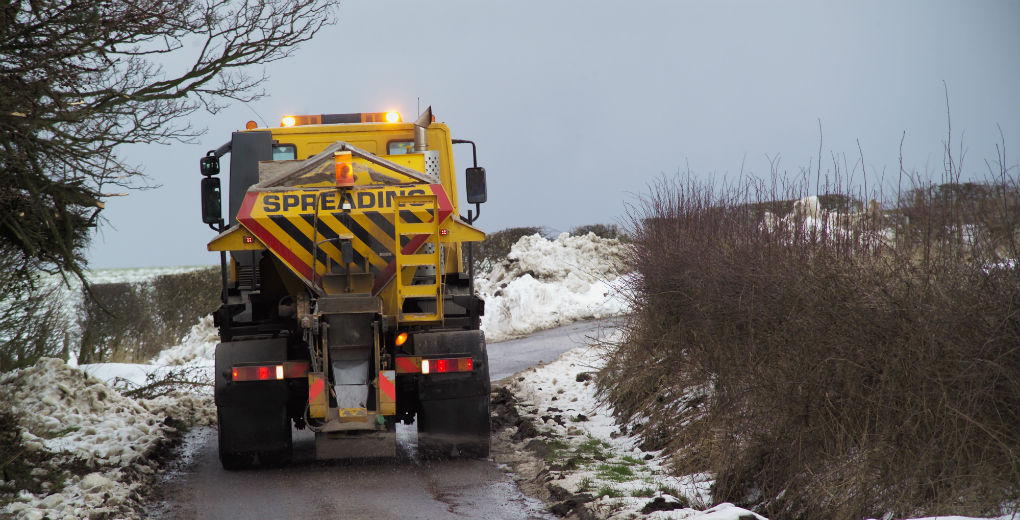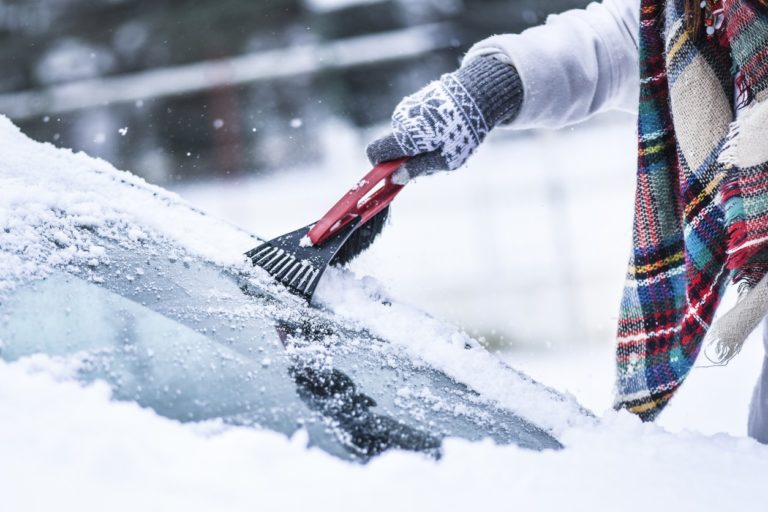We look into the whys the hows and the wheres of gritting, starting with a pivotal, but obvious question:
1. Is it grit or salt?
Most of the “grit” you see on the road is actually rock salt, which is brown due to the impurities within its unrefined form. However it may also be combined with grit for greater traction on hard packed snow.The more expensive option of molasses combined with rock salt provide adhesion so salt isn’t thrown off the road by passing traffic, but is more expensive.
2. Does it come from the sea?
No, it’s mined from underground. Salt Union, one of the main suppliers produces 6,000 tonnes a day from its mine in Cheshire. Middlesbrough has another useful source in the form of Cleveland Potash, which generates over 3,000 tonnes of salt a day at Boulby Mine as a by-product. Some councils have contracts with salt suppliers in other countries.
3. How does it work?
Salt stops ice from forming by lowering the freezing point of any surface moisture and dissipates any existing ice or snow to a certain temperature. The reason that you’ll see gritters on busy roads, beyond treating the most heavily used areas as a priority, is because the salt needs vehicle tyres to crush and spread to maximise its effectiveness.
Gritted roads are still not able to hold up against overnight heavy snowfall, which will still settled even in the presence of salt.
4. Does it dissolve?
While the salt won’t vanish at the slightest bit of precipitation, it does need to be protected from the elements. By keeping stockpiles under cover, councils can keep them for a number of years or longer, but supplies are always used before we have a chance to find out. Salt exposed to the elements will keep for a while, but will eventually become soggy and difficult to spread equally.
However, some salt is “pre-wetted” by mixing it with water as this allows for quicker, more even spreading and can reduce the amount of salt needed by a quarter. This method relies on more expensive equipment which a council may not have at their disposal.
5. When does gritting fail to work?
Even salt has its breaking, or rather freezing point, which is around minus 8-10 degrees. In these temperatures, roads will still ice over regardless of whether or not they’ve been gritted.
Salt can also be washed away by rain or snow which has turned to slush and dispersed by passing traffic, which is why you’ll often see gritting lorries repeatedly covering the same stretch of road.




